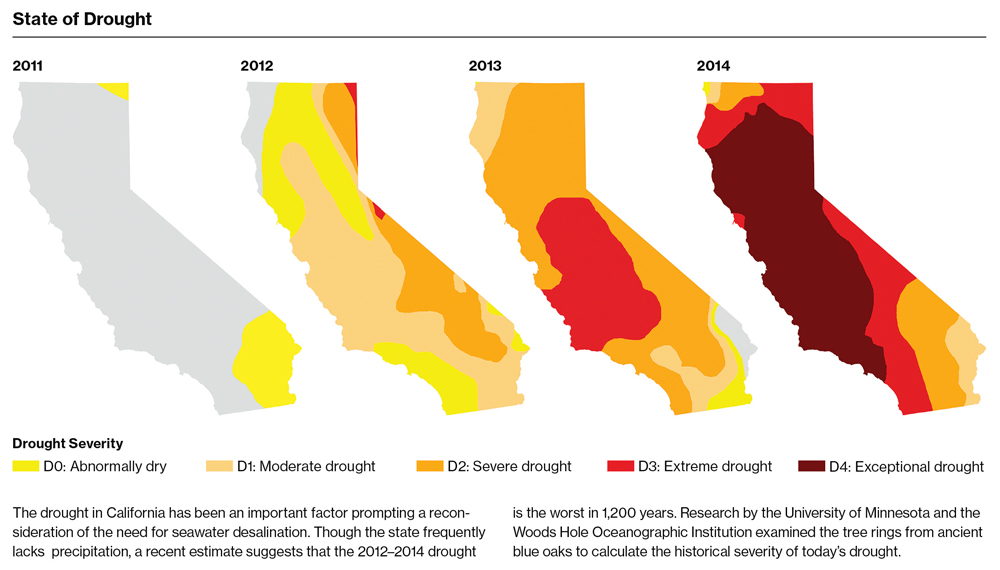Currently Carlifornia is experiencing their worst recorded drought in history. However, Californians are not the only people suffering from the lack of fresh water, nearly 700 million across the world are as well. In order to fix this problem, and to hopefully prevent it from happening again, engineers have been coming up with solutions. One in particular is to use seawater and turn it into drinkable water. Carlsbad, California is currently working on a process that upon completion will turn 100 million gallons of Pacific Ocean water into 54 million gallons of fresh water. The one problem with this is that it costs a great deal of money. As a matter in fact, seawater is the most expensive fresh water source. This is because the process requires a lot of energy. Using distillation and reverse osmosis (RO), the water's impurities and salt would be separated from the fresh water. An estimated cost to run this process is $30 million a year, most of this due to the energy it takes to pump the water through the membranes that'll clean it.
source: http://www.technologyreview.com/featuredstory/533446/desalination-out-of-desperation/

Do you have any clue as to why California is experiencing this drought? Could it be because of global warming?
ReplyDeleteUpon some research I found that meteorologists are looking into the possibility that California is experiencing a drought because of high pressure in the atmosphere. This could prevent storms from hitting the coast and therefore not deliver water.
DeleteWould there be any environmental impacts of removing water from the ocean?
ReplyDeleteHi Arianna, thanks for sharing. Knowing that seawater is the most expensive source of freshwater, what do you think is a more viable option for water?
DeleteHi Allen, to answer your question, think of it like this. There are 352,670,000,000,000,000,000 gallons of water in the ocean, that's three hundred fifty two quintillion ,six hundred seventy quadrillion gallons. Is a couple million going to make a difference? Also, does the water cycle not rain back into the oceans?
DeleteI think an interesting idea would be to created a plant that harnesses the kinetic energy present in wave motion to power the reverse osmosis required to render sea water drinkable.
ReplyDelete